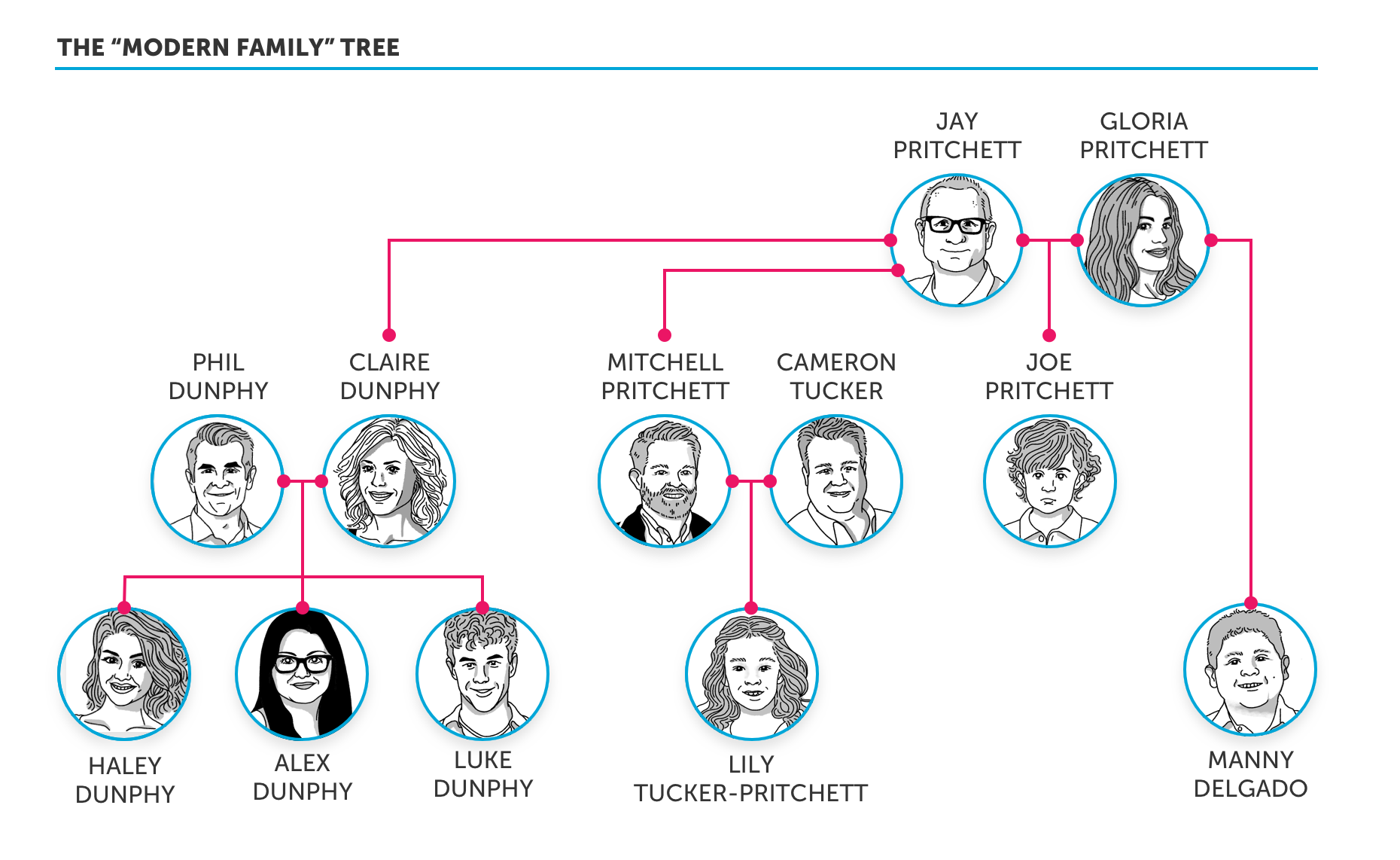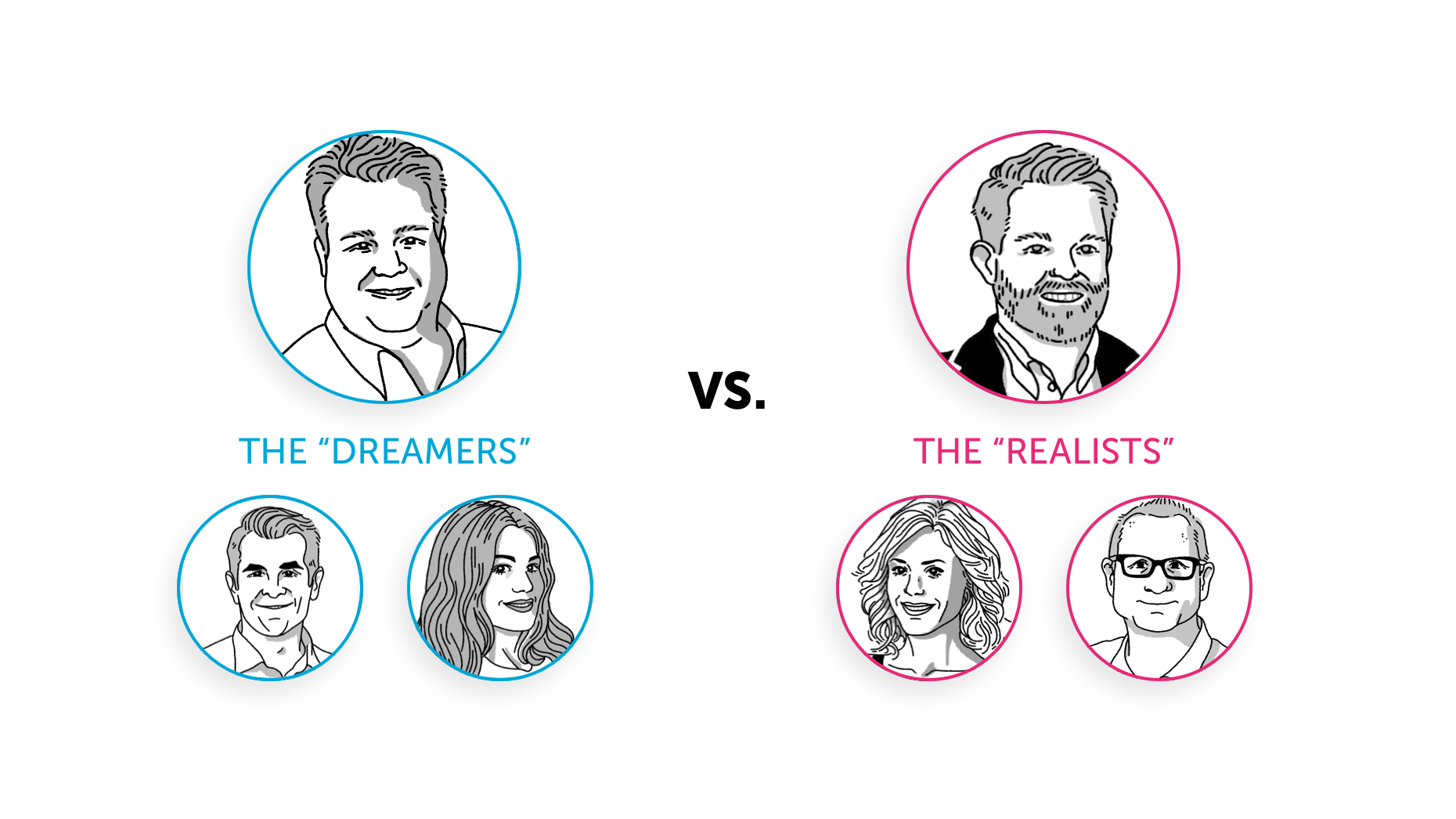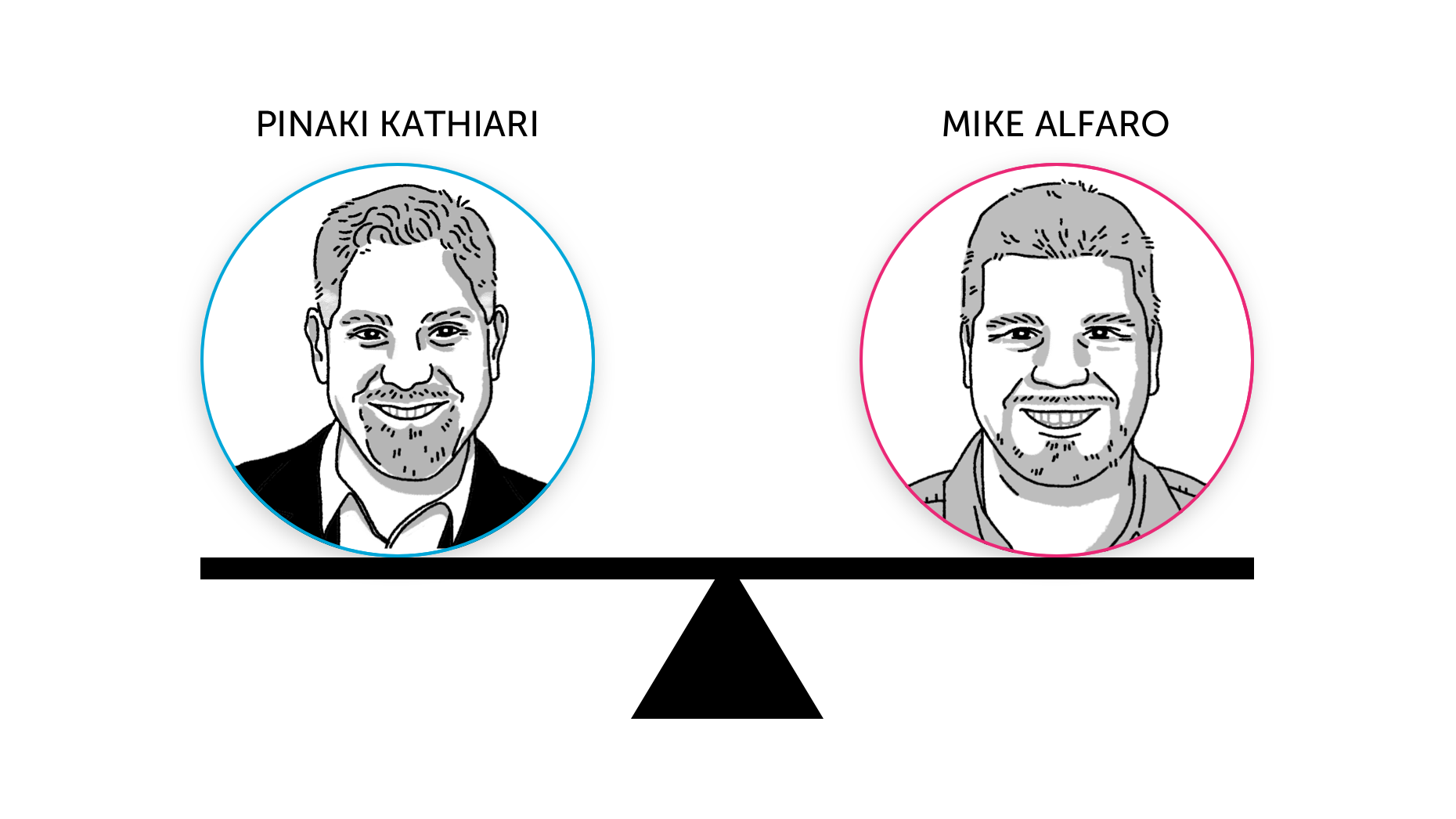Dreamers vs. Realists: Building a Balanced Team
The Premise
The television show “Modern Family” is full of life lessons, heart, and comedic gold.
It’s the variety that gets me – there’s a little bit of everything. The characters are each special and hilarious in their own ways. The jokes are written so that some are slapstick in-your-face funny, while others are quieter, deeply subtle, and part of a longer play. The concept itself casts a wide net – stories are told from diverse perspectives with many different life experiences and scenarios.
For those of you who may not be familiar with Modern Family, the series went on for over a decade and was rated as one of the top shows of its Comedy genre. Character development and camaraderie became key to the show’s long tenure. Despite the vast distinctions of each character, the one thing ultimately ties them (and each episode) together is the fact that they are family.
There’s one episode in particular that left an impact on me. The episode is called “Punkin Chunkin” (season three, episode nine), and I thought it would make an excellent write-up for our “Stories Worth Sharing” series.
The Plot
Throughout the episode, three subplots simultaneously occur and weave through the episode until the point where they intersect and result in comedic combustion. For reference, we have included a helpful “[Modern] Family Tree” to help you keep track of everyone.
Storyline A: Phil and Claire
Phil realizes that his wife, Claire, often puts down his ideas as too unrealistic or outlandish, which he feels has been hindering his success. The “ah-ha” moment for Phil is when a mentee of his comes over to thank Phil for encouraging his career trajectory and for making him believe that every idea has value. Phil encouraged the mentee to always “find the fun in everything and to follow his heart” which resulted in the mentee’s immense business success. The mentee seems like a mini clone of Phil, which flatters Phil, but also makes him abundantly aware that he may have missed out on major opportunities thanks to Claire squelching his aspirations.
Storyline B: Jay and Gloria
Meanwhile, grumpy pragmatist Jay fights with his wife, Gloria, about if they should be honest when asked for feedback about their son’s unimpressive art project. At the risk of stifling the son’s creativity, Jay felt like it would build character to hear some harsh realities. However, Gloria felt like she should do everything to encourage and build up her child. It is also worth noting that parenting style differences frequently emerge between these two and that Jay has already raised two children (Claire and Mitch) without Gloria’s involvement, who turned out to be as stubborn and practical as Jay.
Storyline C: Cam and Mitch
Concurrently, Cam experiences cynicism from his husband, Mitch. Cam grew up on a farm in rural Missouri and loves to share stories from his childhood, though he is known to exaggerate these stories at times. When Mitch questioned the authenticity of one story in particular (though there was a heavy implication in his accusation that indicated doubting other stories as well), Cam was beside himself. What was the story in question? Well, Cam claimed that he once went “punkin chunkin,” where he slungshot a pumpkin across the length of a football field and into the sunroof of a parked car. Mitch, who had heard this dramatized story one too many times, refused to believe it was true – or even possible.
The Boiling Point:
Cam and Mitch’s spat then becomes the focal point of the episode, with all three storylines converging as commonalities from each couple’s individual arguments were brought to light. The “punkin chunkin” controversy comes to a head as the characters naturally split into two groups, siding with either Mitch or Cam – not necessarily based on facts from the story, but more so on the tendencies and characteristics of their personalities: the “artists and visionaries” pitted against the “skeptics and squashers”… The Dreamers vs. The Realists.
The two groups then passionately (read: obstinately) set out to test the theory and see if the story was true (aka even possible) by launching a pumpkin of their own at the local high school football field.
The Resolution
Both sides quickly recognized the error of their ways once they arrived at the field. The Dreamers were stumped at the level of difficulty of this task, doubt creeping into their conscious. The Realists were not having nearly as much fun as the Dreamers, feeling so pessimistic and judgmental that they weren’t even enjoying their victory – they didn’t even want to be right. The experiment allowed time and space to consider the other side’s thoughts and feelings, so just when the Dreamers admitted defeat, the Realists became more invested; steadfast in proving the Dreamers’ side right.
Reenergized by the collaborative effort, the two sides went into problem-solving mode. Together, they noticed details and potential enhancements to their plan and process that were previously overlooked. Each side encouraged the other, now seeing the value of their counterpart. By doing so, the group tapped into a new superpower; they became a unit that was determined and unstoppable. They were able to accomplish the task.
As they stood there and watched a pumpkin triumphantly “chunked” across the full length of a football field, it provided both sides with a little bit of perspective. Together, they were stronger and more successful as a team.
The Real-World Application
Zooming out a bit, I realized this dynamic – the conflicting personality combination – is quite common personally and professionally. It can be true of every team or partnership. If you spin this family rivalry into a workplace scenario, it becomes even more important; a balanced team is essential so that one side doesn’t overcorrect. These different viewpoints create an opportunity to simultaneously push the envelope and set boundaries – making it bigger and better while still aligning with the overall goal. The team is smarter, faster, and more well-rounded with each exposure.
Let’s take a step back and ask ourselves, “Why wouldn’t we want someone to challenge the way we think? Isn’t that the benefit of having multiple perspectives?”
Our Director of Production, Dan Spedaliere, always says: “It’s good to have a healthy dose of skepticism.” And our CEO, Pinaki Kathiari, often quotes a line from the Ghost in the Shell anime: “If we all reacted the same way, we’d be predictable, and there’s always more than one way to view a situation… It’s simple: overspecialize, and you breed in weakness. It’s slow death.”
So, perhaps let’s change it from “Dreamers versus Realists” to “Dreamers AND Realists.” There is room – and need – for both types of people.
The Real Dream Team
When building a balanced team, look for these two types of personalities. You’ll need those who set the vision, coach, brainstorm, and strategize. Idealists who push the boundaries and think outside of the box to imagine greater than the status quo and fancying of what could be. Then, you’ll need those who are restrained and factual. Logical – and often literal – teammates who are highly efficient at recognizing the boundaries of what is possible. In a way, experts who know the subject matter intimately, including its limitations. You’ll need these executors who can reasonably get the project from point A to point B, acting as guardrails of the assignment and keeping it on track.
At Local Wisdom, we strive to seek out different work style pairings when creating our teams. Our two prominent leaders, Pinaki and Mike Alfaro, have differing personalities that complement one another. Furthermore, each department actively seeks to ensure balance when constructing its own individual teams as well.
Working as teammates with different approaches may be challenging with so many different personalities and at-time contradicting priorities. Meet each other in the middle and provide some give-and-take. Authentic, healthy relationships can’t always be one-sided; one side can’t always be forced to succumb to the other person’s preferences or point of view.
Recognize who on your team are the dreamers (the brainstorming blue sky-ers), and then identify the realists (the cautionary do-ers). Try to put yourself in the shoes of the other side. By better understanding one another, you’ll have more empathy and be able to work together much more easily. Our Marketing team at Local Wisdom loves exploring personality tests, especially this one. Perhaps it would be worthwhile to take a few minutes to try it out yourself and share it with your team as well!
The Moral
To tie this all together and summarize the moral of this “Story Worth Sharing,” I’d like to share the quote that closed out the Modern Family episode. It’s a beautiful statement from (dreamer) Cam.
“There are dreamers and there are realists in this world. You’d think the dreamers would find the dreamers, and the realists would find the realists, but more often than not, the opposite is true.
See, the dreamers need the realists to keep them from soaring too close to the sun. And the realists? Well, without the dreamers, they might never get off the ground.”
The End.








